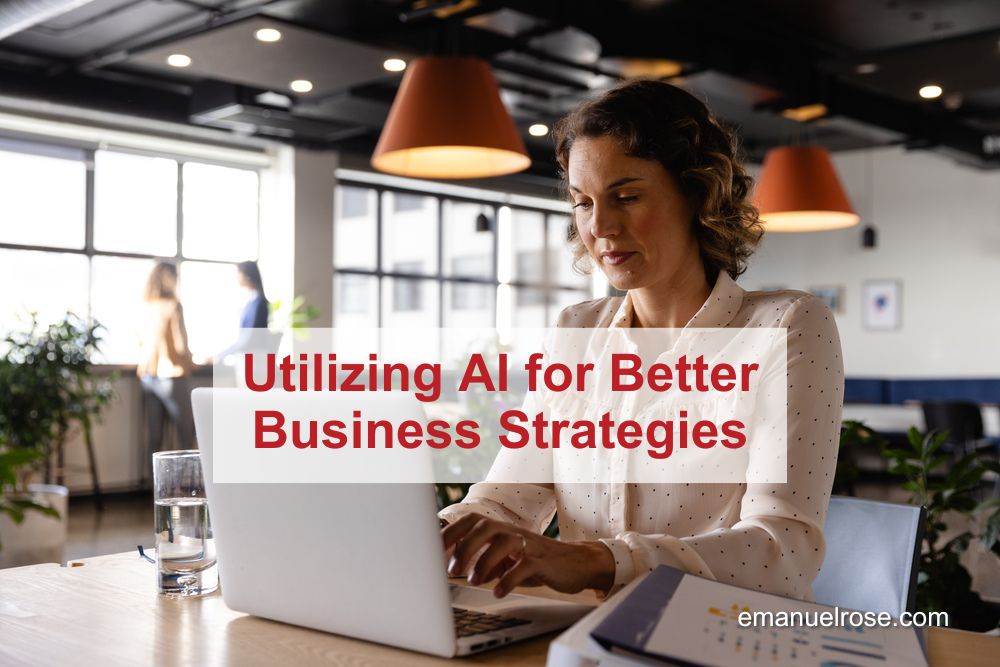The role of Artificial Intelligence (AI) in business has rapidly evolved, and understanding how to incorporate this technology effectively has become essential. One critical area is the ability to integrate AI into various business functions. This blog explores practical strategies and real-world applications to help businesses make the most of AI.
The Shift to Emerging Technologies
In the realm of emerging technologies, change happens swiftly, and businesses must adapt to stay competitive. AI is at the forefront of this change. Historically, technologies like Blockchain and VR were considered cutting-edge, but today, AI takes center stage. The pace at which these technologies evolve means businesses must remain agile, updating their tools and strategies regularly.
Unlike long-term futurists who predict changes a century ahead, the focus here is on practical applications within the next five to ten years. This timeframe allows businesses to make informed decisions and adopt technologies that provide immediate benefits. The approach is to look at how the world is expected to look a decade from now and work backward to identify the necessary technologies and strategies that must be in place today.
Practical Applications of Virtual and AI Technologies
The projection is a more virtualized world in the near future. This doesn’t simply mean the Metaverse but includes various forms of virtual interactions, such as VR environments and digital avatars. The tools available today, like deep fake technology and AI-generated avatars, already allow for highly realistic virtual interactions. Such advancements suggest a future where much of business communication and operations could happen in virtual spaces.
For instance, companies are increasingly using AI tools to automate tedious tasks. Tools that take meeting notes, summarize actions, and send updates can save enormous amounts of time. By deploying these across all corporate meetings, organizations can efficiently manage and utilize information without manual effort. AI tools are now advanced enough to not only take notes but also trend and summarize content across multiple meetings, providing executives with a comprehensive view of how objectives are being met.
Addressing Security Concerns with AI

One area where AI is proving crucial is cybersecurity. There have been numerous high-profile security breaches, from companies like Bank of America to Live Nation. Traditional methods of securing assets are proving inadequate against sophisticated cyber threats. Cybercriminals are employing AI themselves to create highly convincing deep fakes and phishing schemes.
For example, an incident in Hong Kong involved a deep fake of a CFO who managed to trick an employee into transferring 24 million dollars. The employee believed the CFO was real, even involving other “deep fake” colleagues in the process. This sophistication requires a multi-layered defense strategy that includes education, regulation, and robust verification processes.
One effective method is off-band verification, where identity verification occurs on a different communication channel than the one being used. For instance, if a suspicious request comes through email, a phone call or text message should be used for verification. This helps mitigate risks associated with single-channel communications being compromised.
Implementing AI in Business Operations
Emerging technologies typically find practical applications in sectors like defense, adult entertainment, and high-value transactions first. These sectors drive the initial hype and investment, which then trickles down to mainstream businesses. This phenomenon has been observed repeatedly over the last decade and a half.

For business leaders, the pressing question is how to effectively integrate AI into their operations. It starts with identifying specific needs and ensuring the availability of clean, high-quality data. AI thrives on data, and without it, even the most advanced AI tools cannot deliver valuable insights.
Companies need to think beyond the “shiny new object” syndrome and focus on tangible business cases. The first step could be a thorough evaluation of current processes to identify areas where AI could improve efficiency or effectiveness. Often, starting with the cleanest data available will provide a low-hanging fruit that delivers immediate benefits.
Practical Advice for Business Leaders
Market research has shown that although a majority of CEOs understand the importance of AI, a very small percentage actively invest in it. The gap between understanding AI’s potential and taking action arises from fear of the unknown. CEOs should engage with experts who specialize in AI technology to bridge this gap.
With AI now mainstream, the urgency to adopt it is greater than ever. Board members and decision-makers should allocate time and resources specifically for discussing and implementing AI strategies. It’s no longer just about gaining a competitive edge; failing to incorporate AI could mean falling behind.
Successful AI implementation requires a clear understanding of its value proposition. Companies should aim for a 15-17% improvement in efficiency as a baseline. By methodically studying processes and identifying areas for AI intervention, businesses can achieve significant improvements and remain competitive.

AI is transforming business operations, offering new tools and strategies that can significantly enhance efficiency and effectiveness. From automating mundane tasks to providing robust security measures, AI’s influence is far-reaching. Business leaders must overcome the fear of the unknown and proactively invest in AI technologies to stay ahead in the competitive marketplace.
By focusing on practical applications and tangible outcomes, AI can become a valuable asset in any business strategy, ensuring long-term success and sustainability.

